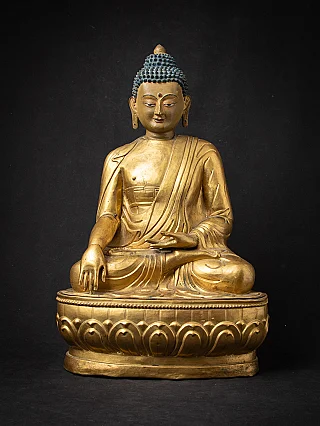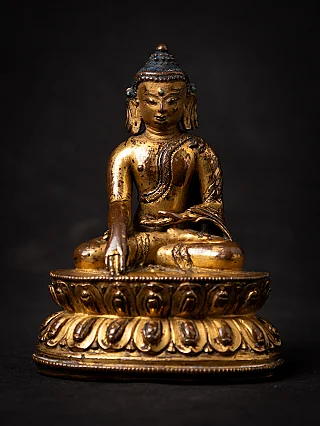Dalai Lama: A Symbol of Spiritual Eminence
Author : Peter Vredeveld

The Dalai Lama (UK: /dæla lm/, US: /dla/; Tibetan: , Wylie: T lai blah ma [tál láma]) holds a revered title among the Tibetan people as the foremost spiritual leader of the Gelug or "Yellow Hat" school of Tibetan Buddhism. This title is deeply intertwined with the rich tapestry of Tibetan spirituality, embodying the essence of wisdom and compassion.
The incumbent 14th Dalai Lama is Tenzin Gyatso, residing in exile as a refugee in India. He is regarded as a religious figure and a beacon of hope and unity for Tibetans worldwide. The Dalai Lama's lineage is believed to be a succession of tulkus, seen as incarnations of Avalokiteshvara, the Bodhisattva of Compassion.
Throughout history, the Dalai Lama has played a pivotal role in unifying Tibet and representing its spiritual heritage. From the 5th Dalai Lama onwards, this revered figure symbolized the unity and strength of the Tibetan state, transcending sectarian boundaries to uphold the core tenets of Buddhism.
The Dalai Lama's traditional role as an ecumenical figure has been amplified by the 14th Dalai Lama's efforts to foster harmony and understanding within the Tibetan community. Despite political challenges and controversies, the Dalai Lama continues to embody the ideals of compassion, peace, and resilience.
The Dalai Lama's historical significance extends beyond spiritual leadership. They have historically headed the Tibetan government, governing the Tibetan Plateau with varying degrees of autonomy. Their legacy is intertwined with the patronage and protection of Mongol and Manchu rulers, reflecting a complex geopolitical landscape.
Despite geopolitical complexities and challenges, the Dalai Lama's influence symbolizes spiritual eminence, unity, and resilience for Tibetans worldwide.
Early Life and Spiritual Journey
Born in 1935 in northeastern Tibet, Tenzin Gyatso was recognized as the Dalai Lama at two, following a rigorous search guided by Tibetan Buddhist traditions. His early years were marked by intense spiritual training under esteemed masters, shaping his deep understanding of Buddhist philosophy and meditation practices.
His upbringing in the monastic environment of Tibet's great monasteries, such as Drepung and Sera, instilled a profound sense of discipline, compassion, and wisdom from a young age. These formative experiences laid the foundation for his future role as a spiritual leader and advocate for peace.
A Voice for Tibet: Advocacy and Exile

The Dalai Lama's journey into the global spotlight began in the 1950s amidst political upheavals in Tibet as Chinese Communist forces asserted control. Faced with escalating tensions and a looming threat to Tibetan culture and autonomy, His Holiness took on the dual role of spiritual leader and political advocate, championing the cause of Tibet's peaceful coexistence and preservation of its unique heritage.
As tensions escalated and the Chinese government's repression of Tibetan cultural and religious practices intensified, the Dalai Lama became a vocal proponent of non-violence and dialogue. His efforts to negotiate with Chinese authorities for greater autonomy and respect for Tibetan identity were met with challenges, culminating in the Lhasa Uprising of 1959 and his subsequent exile.
One of the pivotal moments in the Dalai Lama's life came in 1959 when he was forced into exile following a failed uprising against Chinese rule. Escaping across the treacherous Himalayan mountains into India, he found refuge in Dharamsala, where he established the Tibetan government-in-exile and continued his mission to promote non-violence, dialogue, and human rights.
Global Influence: Promoting Peace and Compassion
Throughout the decades, the Dalai Lama has been a tireless advocate for peace on the global stage, engaging with leaders, scholars, and communities worldwide. His teachings on compassion, mindfulness, and the interconnectedness of all living beings have resonated beyond religious boundaries, attracting followers from diverse backgrounds and cultures.
His engagements with scientists, educators, and political leaders have led to collaborations on issues ranging from climate change to conflict resolution. The Dalai Lama's emphasis on the common humanity that unites us all has been a driving force in fostering greater understanding and empathy in a world often divided by differences.
Intellectual Contributions: The Art of Happiness and Beyond
In addition to his spiritual leadership, the Dalai Lama is renowned for his intellectual contributions, including profound writings on ethics, happiness, and the pursuit of inner peace. His book "The Art of Happiness," co-authored with psychiatrist Howard Cutler, became a bestseller and offered practical insights into finding joy and meaning in modern life.
His Holiness's writings and teachings delve into profound questions about the nature of suffering, the power of compassion, and the importance of cultivating a peaceful mind. His emphasis on secular ethics and universal values has resonated with people of all backgrounds, inspiring individuals to lead more meaningful and compassionate lives.
Challenges and Controversies
Despite facing political challenges and controversies, including tensions with the Chinese government and debates over Tibetan independence, the Dalai Lama has steadfastly committed to dialogue, non-violence, and promoting human values.
His efforts to engage in dialogue with Chinese leaders while advocating for the rights of Tibetans have sometimes been met with criticism and skepticism. However, his unwavering dedication to peaceful resolution and consistent message of compassion and reconciliation have earned him respect and admiration from people worldwide.
Legacy and Future Initiatives
In recent years, His Holiness has focused on initiatives promoting environmental sustainability, interfaith dialogue, and the role of education in fostering global harmony. His engagements with scientists, educators, and youth leaders underscore his belief in the transformative power of knowledge and collaboration.
His advocacy for environmental protection and sustainability reflects his deep concern for the well-being of future generations and the planet. Through initiatives such as the Mind & Life Institute and interfaith dialogues, he continues to bridge cultural and religious divides, emphasizing the shared values that unite humanity.
Conclusion: A Timeless Message of Compassion
As the Dalai Lama enters his twilight years, his legacy as a spiritual guide, peace advocate, and beacon of wisdom continues to inspire millions worldwide. Whether delivering public talks on compassion or engaging in interfaith dialogues, he remains a revered figure whose teachings resonate with people of all faiths and walks of life.
In a world often marred by conflict and discord, the Dalai Lama's message of compassion, forgiveness, and inner peace is a timeless reminder of humanity's potential for goodness and understanding.
Share this page





















